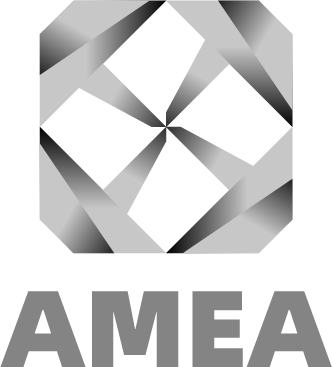

Prof. Zhi Zong, China
School of Shipbuilding Engineering, Dalian University of Technology
Prof Zhi Zong received his Ph D in 1995 from Hiroshima University, Japan in the field of shipbuilding engineering. He then joined Institute of High Performance Computation, Singapore as senior and principle research engineering working in the field of underwater explosion and computational mechanics. In 2004 he joined Dalian University of Technology, China as professor. He once acted as dean, School of Shipbuilding Engineering, and Vice Director, State Ley Lab for Structural Analysis of Industrial Equipment. He served editorial boards of 10 over internal and local journals. He authored over 340 papers, 190 among which are indexed by SCI. He authored 7 monographs, 3 among which are published by Elsevier, CRC and Lambert Academic. Prof. Zong has been active in the research fields of fluid mechanics, computational mechanics and shipbuilding engineering. He discovered splash resistance of trimaran ships, and new forms of solitary waves. He developed variable topological Boundary Element Method for simulating jet formed after bubble collapse, which is widely applied in Underwater explosion. He also refined SPH and Discrete Vortex Method to obtain better simulations of water wave evolution, ship motions in waves, slamming, water-entry, vortex-induced-vibration. He received first and second prizes of Ministry of Education in Science and Technology, prizes from Ocean Engineering Consultation Association.
Speech Ttile: Randomness in Ship Icedynamics and Its Modelling.
Abstract: Melting ice sheets in Arctic are reshaping global sea transportation modes by reducing eleven thousand kilometers sea distance through traditional Suez canal to seven thousand kilometers through northern sea routes (or arctic sea routes). This is economically attractive, fusing worldwide studies of ship icedynamics in the last decades. It is, however, ship performance in ice is very complicated compared with its counter part in open sea. The biggest characteristics is that ship performance is random in essence, a well-known fact which however, received insufficient attentions for difficulties. Introducing randomness into modelling of ship icedynamics is important for accurate description of ship icedynamic performance and proper design of ship behavior in ice. To handle this challenge, we first outline random features of ship icedynamics from ice properties, ship-ice interactions and ship performance. Both theoretical and experimental results are briefed to show the fact. Then mathematical tools are introduced to describe these randomness. Through the presentation it is shown that randomness is inherent in ship icedynamics. It helps better design of ice-breaking or ice-resisting performance of ice-going ships.

Prof. Weiwei Zhang
School of Mechanical Engineering, Dongguan University of Technology
I was graduated from Jinan University with with a Ph.D. The Thesis was entitled Studies on Crack Identification Methodology for Structure Based on Mode Analysis and Stress Wave. After graduating, I went to work at Taiyuan University of Science and Technology. In July 2021, I was transferred to Dongguan University of Technology. I presided over 2 research projects of NSFC: 1) Dynamic response and damage identification method of nonlinear stress wave due to Microscopic defects under moving loads (2012.1-2014.12); Studies on bifurcation theory of nonlinear stress wave due to microscopic defects and its application (2019.1-2022.12), and 2 Natural Science Foundations of Shanxi Province: 1) Research on the propagation of guided Waves in welded Pipes and duffing oscillator identification Method (2012.1-2013.12); Nonlinear mixing characteristics and Application of stress waves induced by defects in rail (2018.12-2020.12). In past, I published 1 monograph entailed Pipe Ultrasonic Guided Wave and Chaos System Inspection Technology, more than 50 academic papers, ant 5 authorized invention patents. (more)
Research Areas:
① Solid mechanics
② Structure health monitoring
③ Stress wave
Speech Ttile: Chaos Sensitivity-based Detection of Weak Ultrasonic Guided Wave
Abstract: Ultrasonic guided wave testing technology is a nondestructive testing technology based on the theory of low-frequency stress wave propagation in bounded structures. This technique is widely used in elongated structures, such as pipelines, railway tracks and reinforcement bars owing to the detection range. However, for long-distance small defect detection, the test signal often behaves as a weak guided wave signal under strong noise, which leads to the risk of missing inspection. To improve the detection sensitivity of small defects, chaos sensitivity-based weak ultrasonic waveguide detection method is proposed. By superposing noise and detection signal as disturbance on driving force, it is verified that the chaotic system has strong noise immunity and parameter sensitivity. We studied the sensitivity of various chaos index (such as phase trajectory, Lyapunov exponent, and Poincare map) to weak signals. Based on this, a time-shifted window function and dichotomy method are combined to achieve pipe defect identification and localization. To quantitatively identify defect parameters, the influence characteristics of ultrasonic guided wave on Duffing systems were deduced in detail. The amplitude and time of flight of defect echo is identified by double Duffing oscillators, and the defect size and location detection method is proposed. Experimental results showed that the small defects with section loss rate of 3% can be detected using chaos system. The identification error of the defect size was below 7%, and the defect location identification error was below 6%, indicated that the method could effectively improve the sensitivity of Ultrasonic guided wave in the detection of small defects in a pipeline. This provided a guarantee for early damage identification of a pipeline.

Assoc. Prof. Dr. Santhosh Krishna B V
New Horizon College of Engineering
Dr.Santhosh Krishna B V is working as a Associate professor in the Department of Electronics and Communication Engineering at New Horizon College of Engineering, Bangalore. He has 10 years of experience in teaching and research. He has authored 9 textbooks in the area of communication and networking. He has published around 14 papers in Scopus/SCI indexed journals and conferences. His area of interest includes Medical Image Processing, Communication Network and Security.
Speech Ttile: Application of machine learning procedures for mechanical system modelling
Abstract: Today’s engineering tasks are usually part of multi-parameter, -level and -physics processes. Numerical models and simulations are often applied in development processes. Common to all model-based approaches is a certain calculation procedure that contains one or more variables which are used to create the link between the model and a real counterpart. The economic world is during a constant state of amendment. Machine learning can change mechanical engineering and so several user industries. Implementation has already begun; currently the main focus is on concrete application situations and their implementation. Machine Learning brings several new and exciting approaches, particularly for mechanical engineering application. The potency, flexibility, and quality of the systems will be considerably improved with the assistance of the obtainable knowledge. New business models for user area unit developed. Machine Learning ensures that software system and data technology area unit progressively turning into the key drivers of innovation in mechanical engineering application. This variety of applications requires models to be established, which are capable to predict the characteristics of the (expensive) full featured-models with reduced effort. As the deviations from the nominal value are relatively small compared to the characteristic values, high accuracy and still physical valid prediction methods are required. From system modelling standpoint different approaches are available. This study presents several methods, highlights and discusses their capabilities, efficiency and influences on accuracy.

Assoc. Prof. Yipin Wan
School of Construction Machinery, Chang′an University
1. Sensor design and load test;
Mainly aiming at the load physical quantities in complex mechanical system, such as tension / pressure, torque, bending moment, etc., according to the force characteristics of the research object, the sensor design under non-standard conditions and the corresponding load physical quantity test are carried out. On this basis, the relevant research on the force characteristics and external load spectrum is carried out.
2. Lightweight materials and structural design;
Based on the review of materials and multidisciplinary optimization, the structural lightweight design is carried out. Comprehensive use of topology optimization, shape optimization, size optimization, free size optimization, hybrid model optimization, etc., to find the optimal force transmission path, determine the optimal structural layout scheme, and realize structural lightweight.
3. Dynamic analysis of complex structure system and transmission system;
It mainly designs fatigue simulation, modal simulation, dynamic characteristic analysis, linear finite element analysis, multi-body dynamics analysis of complex structure and power transmission system.
Speech Ttile: Research on Load Test and Fatigue Test Method of Loader Structure and Transmission
Abstract: With the rapid development of loader energy-saving operation and heavy load shovel technology, the problem of structural fatigue life has become increasingly prominent, especially the working device directly bearing external loads. The lack of common technology such as load spectrum, fatigue life prediction and test method has become the key to improve the performance of loaders, making domestic loaders less competitive. Therefore, we need to have a comprehensive understanding of the actual working environment of China's loaders, establish load spectrum and fatigue life analysis system for working devices, so as to provide theoretical support for prolonging product life, improving reliability and arranging maintenance cycle. In this report, the methods of load spectrum collection and compilation, fatigue life assessment and fatigue test are carried out with the ZL50G and LW900K loader working devices as the object.

Assoc. Prof. Fengming Du
Marine Engineering college of Dalian Maritime University
Fengming Du , Ph.D., is an associate professor and master tutor of Dalian Maritime University. His main research fields are structural mechanics, alloy material preparation, green energy, engine optimization design, etc. He has won the titles of "Hundred Thousand Talents Project" in Liaoning Province, "Dalian Youth Science and Technology Star", "Dalian High-level Talent - Young Talent", and 1 Natural Science Academic Achievement Award in Liaoning Province. He presides 1 key project of Liaoning Provincial Natural Science Foundation, 1 Liaoning Provincial Shipping Joint Fund, 1 General Project of China Postdoctoral Fund, and Dalian High-level Talent Innovation Support Plan Project, and 2 Fundamental Research Funds for the Central Universities, and 1 horizontal project. Participated in the National Natural Science Foundation of China, the pre-research project of the Ministry of Equipment Development, the National Defense Science and Technology Bureau project, the Ministry of Industry and Information Technology's high-tech ship project and more than 10 horizontal projects. He has published more than 60 academic papers, more than 50 of which have been retrieved by SCI, and authorized 1 invention patent.
Research Areas: structural mechanics, alloy material preparation, green energy, engine optimization design
Speech Ttile: Investigation on the mechanical behavior of continuous casting mold
Abstract: During the continuous casting process, the solidification of slab always deviates from ideal state, the non-uniform heat transfer, deformation and friction have been the major reason of slab defects, which becomes the key factor to improve slab quality. Rationally connect numeral simulation and measured data to investigate the asymmetric and non-uniform character during mold, and discuss the key factors which would affect the slab quality such as heat transfer/solidification, stress/deformation, friction/lubrication and gap distribution under real conditions, is one of the key point of the research. Based on this, this paper focuses on the heat transfer, solidification, deformation and friction in continuous casting mold and slab, and it is significant for improving slab quality and optimizing process parameters.